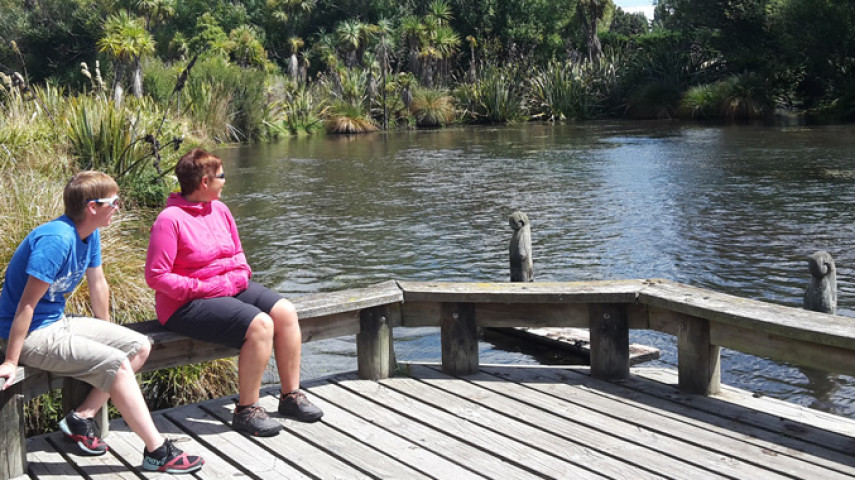A special feature of Janet Stewart Reserve is a pā harakeke; a flax garden for cultural harvest.

Access
Janet Stewart Reserve covers 1.9 hectares on the corner of Marshland Road and Lower Styx Road.
Entry to the car park is off Lower Styx Road.
Take the 150 The Palms/ Spencerville bus; exiting at bus stop 51628.
Metroinfo(external link) has up-to-date bus information.
Dogs
Dogs are prohibited to protect wildlife and the pā harakeke traditional flax harvesting area.
Historically, this landscape formed part of the Styx River floodplain and was covered in native ferns, tussock and raupo. Middens found here indicate that the area was used by early Māori. As farming developed, the land was converted into grassy paddocks.
Janet Stewart Reserve was created to incorporate cultural and natural values. The reserve was transformed in the 1990s from a flat, willow-bordered paddock into a flourishing native wetland reserve. It features well-established forest plantings, a pā harakeke (flax garden for cultural harvest) and large areas of open water surrounded by riparian planting. The reserve now provides habitat for bird and water life as well and has improved riverbank stability and water quality in the area.
The restoration of this reserve is part of the wider Styx River project which involves the ongoing development of a source to sea Styx Conservation Reserve. This has largely been driven by the Styx Living Laboratory Trust and the Christchurch City Council with support from the community.
Edward Stewart bequeathed the land to the Council in his will in 1993, on the condition that it became a reserve named in honour of his mother, Margaret Jane Stewart, or Janet as she was commonly called.
Janet Stewart and her husband John purchased the farm at 119 Lower Styx Road during the 1920s and went on to raise seven children there, one of whom was Edward, who remembered his mother as a hard worker with a great sense of humour.
